AudioCulture
The noisy library of New Zealand music
Te pātaka korihi o ngā puoro o Aotearoa
Mal Logan
The New Zealand keyboard player, a sought after session player, arranger and producer, was a mainstay of the Renee Geyer Band on the road and in the studio for several years and toured and recorded with the Little River Band in Australia and the USA, appearing on two of their albums.
As a teenager in Wanganui Mal Logan was a member of The Playdates alongside Ian (Tiny) Thompson on bass and John Bilderbeck on guitar. They wore “pink shirts, black ties and brocade waistcoats” often playing several gigs an evening, three to four nights a week, varying their repertoire from waltzes and foxtrots to covers of John Mayall and the Bluesbreakers.
On arriving in Auckland to work with the Lands and Survey Department in late 1967 he met up with singer Rex Smith and auditioned for The Green & Yellow. Shortly after they won the Battle of the Bands at the Auckland Town Hall.
The band’s former drummer Peter Grattan says they were conned out of their reward, a trip to the UK, when the promoter absconded back to Australia. The contest was re-run in Wellington but the boys all had day jobs and couldn’t get the time off so were relegated to second place. The prize of a trip to Abbey Road studios went to The Fourmyula.
Grattan joined on drums at a time the band were “very demoralised” even though they were South Auckland's favourite band. “The Opai brothers, Whymond and Laurie from Glen Innes gave us an incredible rhythmic Māori musical edge … Our sound was very much like The Equals or Easybeats … guitar driven with a lot of soul classics.”
Logan was bought in as a fifth member. “He had a tiny Teisco organ, wore a tie and sported a 'greased swish back'. We thought he was a real square, then he started playing ‘I Put a Spell On You’... we were blown away and he was in.”
He’s a Rebel
After wild success in touring and on the charts, including a gruelling time in Australia for the first half of 1968, Larry Morris and The Rebels were back in New Zealand to try and pick up where they left off. Keyboard player Terry Rouse, having long struggled with exhaustion, quit the band in July following the successful Blast Off 68 Tour.
They brought in Brian Henderson on organ to record the single ‘Do What You Gotta Do’ then after working as a quartet for a couple of months, hired Mal Logan on keyboards.
Larry’s Rebels first heard Logan when The Green & Yellow were a support act. “He made them sound incredible with songs like ‘This Wheels On Fire’ and ‘Hush’,” says Grattan.
Rebels guitarist John Williams told music writer Andrew Schmidt the group was under considerable stress meeting commitments placed on them by record label Impact and struggling financially.
“Impact blatantly exploited us. We were very naive. We knew nothing about publishing. We knew nothing about royalties. We were a huge money-spinner for them. We were earning good money in Australia, but we never saw it. We’d get sold off to Ivan Dayman in Brisbane, go for twelve dates and end up playing twenty to thirty.”
Singles rolled out, the touring was relentless and often the band would only be alerted to their success by hearing their music on the radio.
Singles rolled out, the touring was relentless and often the band would only be alerted to their success by hearing their music on the radio. With ‘Do What You Gotta Do’ hitting the No.6 spot on the charts in September 1968, Larry stepped aside after an argument with management to pursue a solo career and a DJ spot on Auckland’s Radio I.
Larry’s parting shots, already in the can, were classic New Zealand rocker ‘I Feel Good’, and a version of Paul Revere and The Raiders’ ‘Mo’reen’. The Rebels, now fronted by Glyn Mason, formerly of The Bitter End and Jigsaw, picked up the bookings and carried on, even achieving a No.1 hit with ‘My Son John’ in March 1969.
With the album Madrigal completed, The Rebels moved to Australia in March 1969 and were resident in Melbourne when it was released. Former Rebels drummer Nookie Stott told music writer Graham Reid that the group was in search of a fatter sound and agreed a Hammond organ and Leslie unit would give them what they wanted.
However $10,000 was a lot of money and there was no way Mal Logan could afford that so the band put the equipment on hire purchase and he agreed to pay them back over time. They got the fatter sound but Stott says Logan never repaid them. He shrugged it off as if it was par for the course at the time.
During their 18 months in Australia the band recorded another single which disappeared without a trace and by January 1970 so had The Rebels.
Invaluable New Zealand influence
The early 70s were a great time for music in Australia. Audiences were looking for something beyond the old pub rock formula and it seems a taste of New Zealand gave many bands the creative blues and prog-rock edge they were looking for.
In June 1970, Logan joined Perth-based unit Bakery alongside former New Zealand Avengers drummer Hank Davis and bass player Eddie McDonald. Guitarist Peter Walker and singer and flautist John Worrall completed the band, considered one of Australia’s leading underground groups, known for their complex arrangements, blending country, jazz and rock.
After only four months with Bakery, Logan joined expat Charlie Tumahai in Healing Force. The prog-rock unit featured Tumahai on vocals and bass and seasoned Australian players Laurie Pryor on drums and Lindsay Wells on guitar. They quickly gained the reputation as a supergroup, playing large venues and rock festivals in Adelaide and Perth.
They were a major drawcard in “the head” scene in Melbourne and as a five piece with John Pugh on guitar, released ‘Golden Miles’, one of “the most admired Australian progressive rock recordings” of the period. Australian rock magazine Golden Miles took its title from the original track penned by Wells. Music website Milesago writes that the song featured “rippling Hammond organ by Logan with a beautiful melody line and a dramatic chorus, highlighted by the soaring vocals of the late, great Charlie Tumahai.”
Healing Force fell apart with Wells and Pryor defecting to Phil Manning’s blues-rock band Chain, featuring Glyn Mason, Logan’s former bandmate in The Rebels, on guitar and vocals.
Logan joined blues rock band Carson in late 1971, playing the first Sunbury Pop Festival in January 1972 and that Easter weekend at the Mulwala Pop Festival supporting headliners Canned Heat and Stephen Stills. They released the single ‘Boogie’ in September, their debut Top 20 album Blown on Harvest Records in November produced by New Zealander Rod Coe (bass player with Freshwater, Revival, The La De Da’s).
Carson performed their last gig at the second Sunbury Pop Festival in late January 1973. Logan also appeared at the festival with the reformed Living Force. The final iteration of Healing Force with Pryor, Pugh and newcomer Gus Fenwick (The Action and The Pleazers) on bass and Mark Capewell (ex Company Caine/ Carson) on brass began gigging again in November 1972. Charlie Tumahai returned for a one-off at Sunbury.
Playing with Renee Geyer
Logan formed Alta Mira in 1973, featuring former Carson and Chain drummer Tony Lunt, ex Chants R&B guitarist Tim Piper and Charlie Tumahai, before hooking up with The Dingoes, Australia's preeminent country-rockers who sought to “marry rhythm and blues with Bush music".
Logan was a ring-in while guitarist and vocalist Chris Stockley was recovering in hospital from a serious gunshot wound after confronting a notorious Melbourne drug dealer who was trying to gatecrash a party. Logan stayed on until the end of 1974. He was with the band for their self-titled debut album.
In 1975 Logan caught the break that would keep him in the mainstream with recording and performing work for nearly two decades.
In 1975 Logan caught the break that would keep him in the mainstream with recording and performing work for nearly two decades, while allowing him scope to work on a range of other projects including playing with bandleader Barrie McAskill and guitarist Mike Rudd, ex-Chants R&B and Spectrum.
Renee Geyer invited Logan to join her touring band Sanctuary to support her 1974 album It’s A Man’s Man's World and the charting track of the same name. Battling with RCA, which refused to allow her to record more originals, she met with Mushroom Records boss Michael Gudinski and band manager Ray Evans and struck a deal where RCA would record the album and singles but they’d go out with a Mushroom label.
The result was Ready To Deal, recorded in August and September 1975 with Logan on keys, Greg Tell on drums, Barry (Goose) Sullivan on bass and Mark Punch, who’d been with her original backing band Mother Earth, on guitar. The band co-wrote most of the material and was renamed the Renée Geyer Band. The album headed up the charts and delivered one of her signature songs, ‘Heading In The Right Direction’, previously recorded by New Zealander Leo de Castro and the Johnny Rocco Band, and written by former band members Punch and Garry Paige.
Logan also featured on Really, Really Love You, the live album recorded at Melbourne’s Dallas Brooks Hall in April 1976 just before she left to try her luck in the USA. Logan and bass player Sullivan went with her to record Moving Along released in May 1977 on RCA/ Mushroom Records. Her two regular musicians were supplemented by members of Stevie Wonder’s band, Ray Parker Jnr and other session players. The album reached No.11 in Australia and delivered the hit ‘Stares and Whispers’. A re-recorded version of ‘Heading in the Right Direction’ was Renee’s first US & UK single.
The general perception was that those rich, raspy vocals belonged to a black American and Polydor recommended she keep a low profile and not have her photo on the album cover. Geyer stood firm insisting on using “my big pink, huge face”. Her popularity slipped and this was blamed on her headstrong decision. Geyer continued to win respect in Los Angeles as a session vocalist.
After losing some traction on her return to Australia, Geyer changed tack, teaming up with former La De Da’s guitarist Kevin Borich and his band in June 1979 for Blues License. The Kevin Borich Express featured her old team, Logan on keys, Mark Punch and Tim Piper on bass and guitars with Kerrie Biddell on backing vocals. It became a steady seller and a favourite of fans.
Between 1978 and 1982 Logan recorded with, filled in for and toured with the Little River Band. He played on their platinum selling Sleeper Catcher album including hit single ‘Reminiscing’ recorded in May 1978.
He joined the band for their US tour in December that year and features on the “live” American side of the double disc Backstage Pass, released in 1980. That year he played clavinet, composer, Hammond synth, electric piano and synthesiser on Johnny Farnham’s Uncovered album.
Logan was back in various versions of Renee Geyer’s recording and performance bands in 1988 and 1991. He played on Jimmy Barnes’ Soul Deep album in 1991 and his JB50 CD in 2006. Logan continues to compose, arrange, produce and engineer and play with a range of top Australian artists.
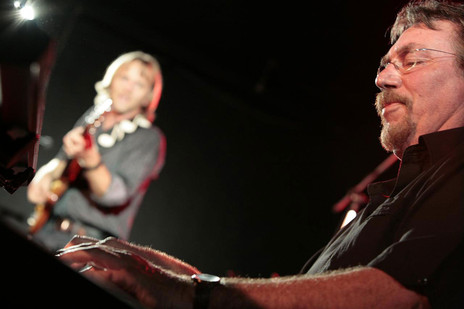
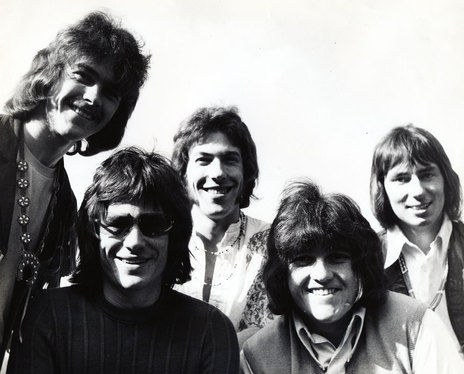
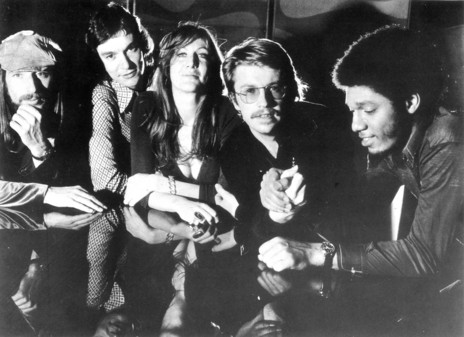
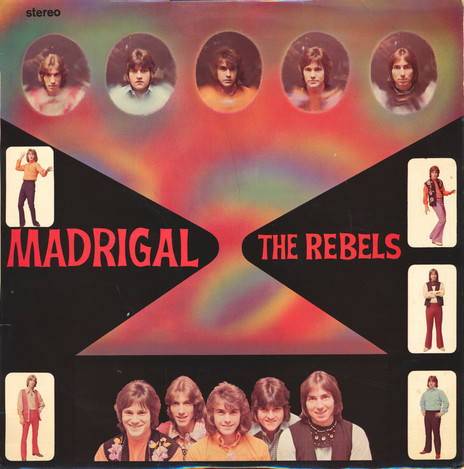
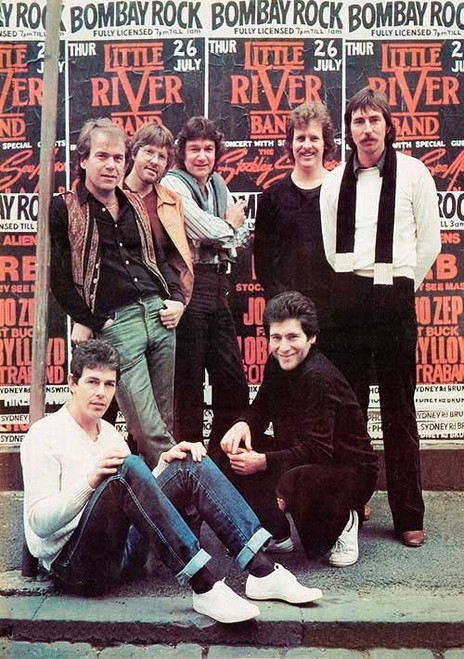
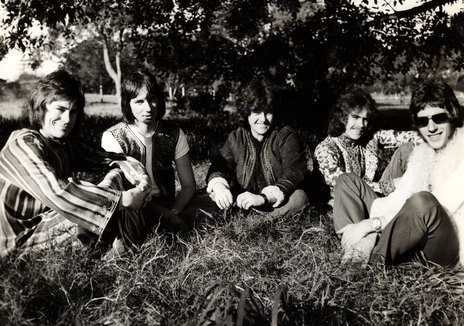
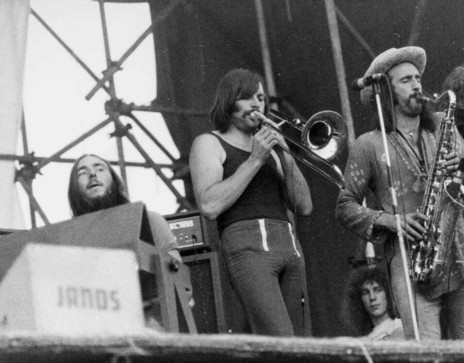
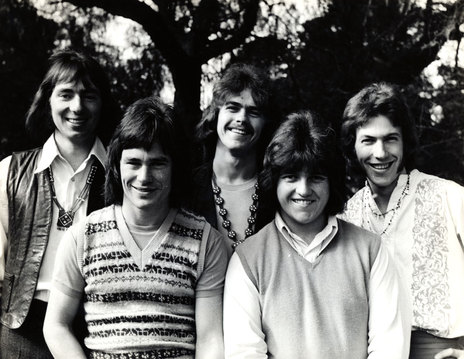
Visit our sister site
NZ On ScreenMade with funding from
NZ On Air
